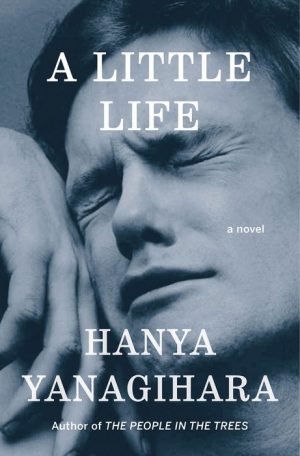Student Directed One-Act Play Festival Showcases the Best of Stetson Talent
April 26, 2018
Last Tuesday, Stetson students gathered in droves to celebrate the achievements of our own student researchers. From laser-powered tweezers to the history of stigmas against sweet wine, seniors tackled it all in poster sessions and oral presentations across campus.
Less than a week later, a different kind of showcase was held in the Second Stage Theatre, Stetson’s own Theatre Arts building. Unlike Stetson Showcase, this event did not consist of posters, speeches, or awards banquets. Instead, students of all class levels, majors, and backgrounds showcased their many artistic talents in the biennial Student Directed One-Act Play Festival.
This year’s festival presented five one-act plays directed by students in Dr. McCoy’s Advanced Directing course. Each play was selected, cast, designed, and performed by Stetson’s theatre arts students, plus several student guests from other departments. As I sat down to watch the show not once, not twice, but three times this weekend, I saw Stetson theatre at its best, with stellar work on the part of every student who participated.
Poof!, directed by Cori Lapinsky
Our show begins with a bang – literally – as the stage lights up in a flash. In the darkness, we hear Loureen (Lynxh Cruz) shout “DAMN YOU TO HELL, SAMUEL!” A spotlight illuminates a pile of ash on the floor as the voice of director Cori Lapinsky reads out an author’s note: “Nearly half the women on death row in the United States were convicted of killing abusive husbands. Spontaneous combustion is not recognized as a capital crime.“
We soon find out that Loureen’s abusive husband has apparently spontaneously combusted as a result of her outburst. She calls her upstairs neighbor Florence (Bronte Joseph) for help, and the two embark on a rollercoaster of emotions as Loureen comes to terms with her husband’s death. Throughout the play, she cycles through periods of distress, moments of joy, and conflicting memories of her marriage to Samuel. Subtle changes in lighting on the stage reflect her shifting emotions, and Cruz’s portrayal takes the audience through all the extremes, from sobbing on the floor to laughing jubilantly as she realizes she is finally free. Meanwhile, Florence, who starts off as the voice of reason, gradually progresses through her own cycle of emotions, simultaneously relieved at her friend’s newfound freedom and jealous that she is still trapped in her own marriage. Joseph’s acting style is more subdued, but the raw emotion behind her portrayal no less apparent.
Poof! kicks off the festival on the right foot, with the perfect blend of humor and seriousness to tell a heartbreakingly real, if slightly fantastical, story. The choice to include the author’s note was a powerful one, highlighting the fact that while Samuel’s death could never happen in real life, Loureen’s marriage to him is the unfortunate reality for many women. Adding to this message, the setting of the play is somewhat ambiguous, with Loureen’s clothing and the minimalist kitchen setting taken straight out of a 1950s lifestyle magazine, while references to television and the use of a Queen Latifah song put it closer to the modern day. The message is clear: Loureen and Samuel’s story is timeless, and could happen to anyone, in any era.
This was a show with a story to tell and a lesson to be learned, and thankfully, one with a happy ending. After Florence leaves, Loureen switches on her own music, sweeping up the remains of her dead husband with a smile on her face and the line “You put your hands on me again I’ll put your ass in handcuffs” blaring in the background. The lights fade as she puts her feet up on the coffee table, digging into a chicken leg. Despite her uncertainty throughout the play, in the end, her freedom is the most important thing.
Three Guys and a Brenda, directed by Jaycie Cohen
After the emotional rollercoaster of Poof!, the audience settles in for some comic relief in the form of Three Guys and a Brenda. Starting with the “three guys,” played by Kiara Santiago, Diamante McKay, and Lily Desenberg, crying over animal nature shows, the over-the-top performance begins to poke fun at masculine stereotypes, portraying three tough-looking “bro-y” dudes getting in touch with their emotional sides. The decision to cast three women as the guys makes the humor even more apparent – in particular, McKay’s false deep voice was met with laughter from all sides of the audience. Their costumes, including baggy jeans, oversized flannels, and five-o-clock shadow, reinforce the hypermasculinity of all three men, and the work environment of hard hats on the wall and a water cooler next to an overflowing trash can indicates some sort of traditionally masculine manual labor job.
The plot thickens with the appearance of Brenda (Anie Wojcik), apparently a supervisor at this unspecified workplace. Randall (Santiago) exclaims that “she’s beautiful!” and declares his intentions to tell her about it. After a brief interlude where the guys talk about why it’s hard to be a guy (“You gotta pay. For everything!”), Brenda reappears, and Randall begins his hilariously awkward attempts to talk to her. All the while, all three guys maintain their over-the-top physical comedy, including deep voices, crotch grabs, and a whole lot of lumbering around the stage. The show concludes with Brenda giving Randall a quick kiss, to which he responds by shouting “YEEEEAH!” The guys then dance provocatively while discussing the nice things they’ve done for their significant others.
Although a far cry from the profound social commentary of Poof!, Three Guys and a Brenda does present its own take on the concept of gender roles. The three guys dress, act, and talk in an excessively masculine way, but really just want to kiss a beautiful woman, show their girlfriends they love them, and cry about animal nature shows. Everything from the costumes to the set design presents a stereotypical picture of male gender roles, but the action and dialogue tells a completely different story. McKay closes out the performance by saying, “I told my wife I love the way her voice sounds on the phone, and I do. I still do.” While entirely unexpected, the sentiment was incredibly sweet, and left the audience smiling in spite of the absurdity of it all.
Variations on the Death of Trotsky, directed by Cooper Hendrix
Continuing on with the comedic theme of Brenda,Variations on the Death of Trotsky opens on a man with an axe buried in his skull. He sits in an old-timey looking library, complete with bookshelves and an Oriental rug. Traditional Russian music, dim red lights, and ramblings about the proletariat in a flawless Russian accent tell us that this is Trotsky, portrayed by Steven Kalicharan. His wife, played by Morgan Egan, appears to tell him of an encyclopedia entry she found that claims he will die that day. For the rest of the play, the scenario plays out with slight variations, each ending with Trotsky falling to the ground as the lights go out.
Each variation tells a slightly different story, with one consisting only of Trotsky talking about an ice pick, which his wife corrects: “A mountain climber’s axe! Can’t you get that through your skull?” Trotsky then falls to the ground due to the mountain climber’s axe lodged in his skull. Another variation features Egan playing a rimshot with her shoe while saying, “Perhaps he was…hot to Trotsky?” The comedic timing of both actors, as well as the sound and light crew, makes the start of the show increasingly more hilarious with every variation.
The story picks up, however, with the addition of Ramon, played by Aaron Frank. A Spanish communist posing as a gardener, Ramon admits to having smashed (but not buried, as Trotsky claims) the axe into his skull. He will not explain why, although one variation implies a forbidden romance between the gardener and Trotsky’s wife. Realizing he may never know why Ramon decided to kill him, Trotsky finally dismisses him, and the mood turns somber, with Trotsky remarking that “Even an assassin can make the flowers grow.” As the lights around him fade, replaced by a dim green glow, Trotsky’s wife reveals that he is not, in fact, in his study, but in the hospital, unconscious.
After the hilarity of the first half, Variations on the Death of Trotsky quickly takes on a more serious side. It reflects on the final moments of a man’s life, as he lies unconscious in the hospital, betrayed by his own gardener – a member of the very proletariat he was fighting to protect. He laments that he will never have the opportunity to see Casablanca, a movie which came out two years after his death, and which he “probably would have hated anyway.” He expresses regrets that he was not as good to his wife as he would have liked. Transitioning fabulously from laugh-out-loud comedy to pensieve reflection, Kalicharan and Egan shift the mood to bring everything together, leaving the audience something to think about as they head into intermission.
Daniel on a Thursday, directed by Dakota Stitsinger
During a 10-minute intermission between shows, the run crew brings out the most elaborate set pieces of the festival so far. A mailbox, a pole covered in flyers, and a park bench set the outdoor scene, and an enormous glass case full of liquor bottles and decorated with loose dollar bills tells us that we’re outside a bar. (The glowing neon “BAR” sign is also a clue.) As the lights go up, we see two men, later revealed to be Daniel (Ben Baldwin) and Kevin (Daniel Mejia). Daniel stands in a pressed grey business suit, sipping on a bottle of Beck’s, while Kevin stands opposite him in jeans and an unbuttoned plaid shirt, smoking a cigarette.
The action begins with Kevin’s attempt to strike up a conversation, hilariously greeting Daniel with a compliment – “I like your beer.” Daniel is, of course, confused, and tells Kevin that he isn’t interested in talking to anyone. Throughout the rest of the play, Kevin tries several attempts to get Daniel to talk to him, including pretending to be an old high school classmate and talking about his fictional wife and daughter. After several minutes of elaborate lies and rapid shifts in mood on the part of Kevin (depicted wonderfully by Mejia), Daniel becomes frustrated, claiming that he has no idea who Kevin really is. As the lights shift to a dramatic focus on Kevin, he replies, “You wanna know who I am?” He then explains that he has been admiring Daniel from afar for weeks, and when he found his ATM card next door, he couldn’t resist the opportunity. He reveals himself to be an awkward, lovestruck guy who just wanted a chance to talk to his crush. In the end, he leads Daniel back to where they’d been standing at the start of the play, echoing his opening line of, “Hey.” Daniel smiles, and the pair is met with a chorus of “Aww” from the audience as the lights go out.
Although the tone of Daniel on a Thursday is a little uncomfortable at times, as Kevin refuses to give up despite Daniel’s clear lack of interest, the ultimate message is a positive one. Kevin encourages Daniel to break free from his usual routines and to try something new with a total stranger. He points out that by limiting himself to a “type” – Latin guys – he could be missing out on a great friendship with Kevin, or perhaps something more. While Kevin’s persistence comes off as a bit predatory, it appears that Daniel is somewhat intrigued by him, and he may even be willing to give him a chance. In the end, their little meet-cute seems to work out for both of them, as they are given the opportunity to start over. Mejia and Baldwin have an odd sort of chemistry that makes their coming together seem inevitable, even as Daniel appears to push Kevin away.
Up & At Em, directed by Jane Peterson
Best described as a “darker Inside Out,” Up & At Em closes out the night with a sudden dose of harsh reality, albeit one with an optimistic ending. The show opens with three characters, not yet named, positioned throughout a bedroom. The first, played by David Calhoun, sits at a desk and writes, illuminated in bright yellow. The second, a leather-clad Kiara Santiago, stares angrily into the distance from her place on the bed, lit by a harsh red. The third, played by Lauren Spratt, stares into a mirror and sighs, washed in a grayish-blue light. The lights fade, and the three characters are replaced by Ethan, portrayed by Cooper Hendrix, who spends the rest of the play asleep in bed.
The three characters are soon revealed to be Creativity, Depression, and Self-Esteem, respectively. Creativity is a jubilant, bright personality, encouraging Ethan to get up and write poetry. Self-Esteem, however, is not quite ready to start the day, explaining that they need to feel out what kind of day Ethan will have. Creativity accuses Self-Esteem of letting Depression bully them into making Ethan’s day awful. The story continues to reveal some unfortunate facts about the cast of characters in Ethan’s mind. Creativity, who has apparently been there the longest, has only a level 3 clearance in Ethan’s personality, while Depression is at level 5. Also at level 5 are Dyslexia, Dreams, Hope, and (much to Creativity’s chagrin) Masturbation. However, Self-Esteem reveals that since Ethan’s parents divorced, Love has been demoted from level 5 to level 1. Creativity laments that without Love, the others are essentially meaningless.
The central conceit of the show becomes apparent when Self-Esteem suddenly collapses, leaving Creativity and Depression to fend for themselves. Depression informs Creativity that without Self-Esteem, one of them will need to run interference to keep Suicide from entering Ethan’s thoughts. Depression offers to go, but Creativity argues that “you can’t fight off suicide with depression,” and offers to go themselves. The play ends with a silent depiction of the real-world implications of this maneuver. Ethan wakes up, gets dressed, and sits on his bed with a razor, contemplating self-harm. But as he rolls up his sleeve, he notices his desk, suddenly lit up in dim orange, and he decides instead to get up and write something. In the end, Creativity beats out Depression, and Self-Esteem watches from afar as Ethan translates his emotions into art. The lights fade as the lyrics “I’m feeling suicidal” play him off.
While Up & At Em takes a dramatic turn from the humor of the other shows, it is fabulously executed, with technical elements and costume design fitting together perfectly to tell the story. Depression is portrayed not by mopey sadness, but as a psychopathic genius whose sole purpose in life is to ruin Ethan’s day as much as possible. They deviously plan out exactly how they will “make him feel like shit.” Mental illness is well and truly demonized in this production, and the use of red lights and dark, aggressive-looking clothes portray Depression as a force of evil, rather than mere sadness. In contrast, Creativity is not only depicted with a bright yellow tracksuit and exuberant personality, but they have a distinctly childlike nature, refusing to use words like “shit” and “masturbation.” It is implied that Creativity showed up in Ethan’s childhood, only to be overthrown by Depression after Ethan hit puberty. The excellent acting styles of Calhoun and Santiago create an even greater distinction between the two characters’ personalities. In the play’s final scene, the nonverbal actions of Hendrix and Spratt portray Ethan’s inner struggle without any words needed, an outstanding performance that incorporates elements of everything we have just seen playing out in Ethan’s head. A wide range of personalities tell this all-too-realistic story of one boy’s inner struggle, leaving the audience grieving for Ethan, but with a glimmer of hope for his future.
A Celebration of Theatrical Excellence
With five plays presented by five student directors, this year’s festival presented a multitude of opportunities for Stetson theatre students and friends to present their talents across a wide range of areas. The cast of each show displayed their unique acting abilities to tell stories of life, love, and laughter in their own way. The management staff and stage crews took on the grand challenge of working with five different casts to present five different plays in one night. The student designers took each director’s vision and helped to make it a reality. From the costumes of Bronte Joseph, the elaborate sets of Katie Pulling and Alex Braman, the poignant music and sound effects of Kevin Reynolds and Christian Christensen, and the dynamic lighting of Aaron Frank and James Robinson, every aspect of this production showcased the best work of Stetson students, and every aspect came together to result in an excellent show.







